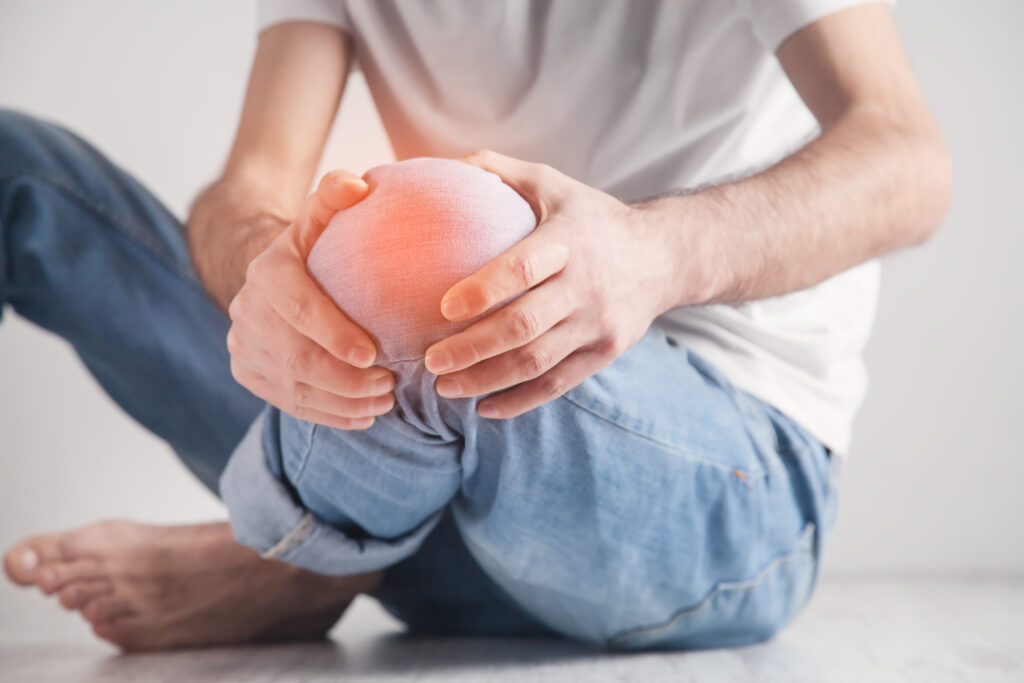If you're struggling with chronic back pain in Calhoun, you're not alone, and there are effective strategies you can adopt to help manage it. From understanding your pain triggers to exploring supportive local resources, every small change can make a significant difference. You'll want to prioritize certain habits that not only ease discomfort but also enhance your overall well-being. As you consider these tips, you might find that some resonate more than others, leading you to discover a personalized approach to your pain management. So, what's the first step you're ready to take?
Understand Your Pain Triggers
When it comes to managing chronic back pain, understanding your pain triggers is essential. Recognizing what exacerbates your discomfort can empower you to make informed choices about your daily activities and treatment options.
Start by keeping a detailed journal of your pain episodes. Note when the pain occurs, the intensity, and any activities or positions you were in prior to the flare-up. This will help you identify patterns and specific triggers.
Common triggers might include prolonged sitting, poor posture, or certain movements. You might also find that stress plays a significant role in your pain levels. By pinpointing these factors, you can take proactive steps to mitigate their impact. For instance, if sitting for long periods worsens your pain, try incorporating regular breaks or stretching exercises into your routine.
Additionally, consider environmental factors. Is your workspace ergonomically designed? Are you using supportive furniture? Small adjustments can make a significant difference.
Also, pay attention to how your body responds to different activities. If lifting heavy objects causes pain, modify your approach or ask for assistance.
Don't forget to communicate with healthcare professionals about your findings. They can provide tailored advice based on your specific triggers.
Understanding your pain triggers isn't just about identifying problems; it's about taking control of your pain management strategy. With this knowledge, you'll be better equipped to navigate your daily life and reduce the impact of chronic back pain on your overall well-being.
Maintain a Healthy Weight
Maintaining a healthy weight is essential for managing chronic back pain.
A balanced diet and regular exercise not only help you shed extra pounds but also strengthen your muscles and improve flexibility.
Balanced Diet Importance
A balanced diet plays an essential role in managing chronic back pain, as it helps you maintain a healthy weight. Carrying excess weight puts additional strain on your spine and muscles, exacerbating pain and discomfort. By focusing on nutrition, you can support your body in shedding those extra pounds and alleviating some of that pressure.
Incorporate plenty of fruits, vegetables, whole grains, and lean proteins into your meals. These foods provide essential vitamins and minerals that promote overall health, including bone and muscle strength. Omega-3 fatty acids, found in fish like salmon, can help reduce inflammation and may ease back pain.
Stay mindful of portion sizes and avoid processed foods high in sugars and unhealthy fats, as they can contribute to weight gain and inflammation. Drinking plenty of water also helps keep your body hydrated and supports your metabolic processes.
Finally, consider keeping a food diary to track your eating habits. This can help you identify patterns and make necessary adjustments.
Regular Exercise Benefits
Regular exercise is a key component in managing chronic back pain and maintaining a healthy weight. When you engage in regular physical activity, you not only strengthen the muscles that support your spine but also help reduce the strain on your back. This can lead to less pain and improved mobility, making everyday tasks easier.
Staying active helps you shed excess pounds, which is essential for relieving pressure on your back. Carrying extra weight can exacerbate pain, so maintaining a healthy weight through exercise is important. Aim for a mix of cardiovascular activities, strength training, and flexibility exercises to create a balanced routine.
Low-impact activities like walking, swimming, or cycling can provide effective workouts without putting too much stress on your back. Stretching exercises, such as yoga or Pilates, can enhance flexibility and strengthen core muscles, which play a significant role in spinal support.
Remember to listen to your body. If an exercise aggravates your pain, stop and consult a healthcare professional.
Incorporate Regular Exercise
Incorporating exercise into your daily routine can greatly alleviate chronic back pain. Regular physical activity strengthens the muscles that support your spine, improving flexibility and stability. This can lead to reduced pain and a better overall quality of life. It's crucial to start with low-impact exercises that won't put additional strain on your back.
Begin with activities like walking, swimming, or biking. These exercises help you stay active while minimizing stress on your back. Aim for at least 30 minutes of moderate activity most days of the week. If you're new to exercise, break it down into shorter sessions and gradually increase the duration as you build stamina.
In addition to aerobic exercises, incorporate strength training into your routine. Focus on core-strengthening exercises, like planks and bridges, which help support your spine. Stretching is equally important; gentle stretches can enhance flexibility and relieve tightness in your back muscles. Consider adding yoga or Pilates, which emphasize body awareness and controlled movements.
Always listen to your body. If you experience increased pain while exercising, stop and reassess your approach. It might be helpful to consult with a healthcare professional before starting a new exercise regimen, especially if you have existing health issues.
Explore Physical Therapy
Exploring physical therapy can be a game-changer for managing chronic back pain. When you start physical therapy, a licensed physical therapist evaluates your condition and develops a tailored treatment plan. This plan often includes exercises to strengthen your back and core muscles, improving your overall stability.
You'll learn how to move correctly and safely, which can help reduce pain and prevent future injuries.
One of the key benefits of physical therapy is the hands-on treatment you'll receive. Techniques like manual therapy can relieve tension in your muscles and improve circulation. This hands-on approach not only enhances your mobility but also fosters a better understanding of your body's mechanics.
During your sessions, you'll engage in various activities designed to gradually increase your strength and flexibility. Your therapist will guide you through targeted exercises and stretches that directly address your specific pain points.
As you progress, you'll likely notice a reduction in pain and an improvement in your daily activities.
Don't forget to communicate openly with your therapist about your pain levels and any concerns. This feedback is vital for adjusting your treatment plan to guarantee you're getting the most benefit.
Utilize Proper Posture
Maintaining proper posture can greatly alleviate chronic back pain and prevent future discomfort. When you sit, stand, or move, being mindful of your body alignment makes a significant difference.
Start by ensuring your workspace is ergonomically friendly. Adjust your chair so your feet rest flat on the floor and your knees are at a right angle. If you work at a desk, keep your monitor at eye level to avoid straining your neck.
When standing, distribute your weight evenly on both feet. Keep your shoulders relaxed and your head aligned with your spine. Avoid locking your knees, as this can lead to tension in your lower back. Instead, engage your core muscles to support your body and maintain balance.
If you're lifting something heavy, bend at your knees rather than your waist. This technique helps protect your back from unnecessary strain. Always keep the object close to your body and use your legs to lift, not your back.
Additionally, be aware of your posture during everyday activities. Whether you're brushing your teeth, cooking, or watching TV, try to maintain a neutral spine.
Consider using reminders, like sticky notes or phone alerts, to prompt you to check your posture throughout the day.
Consider Alternative Treatments
When it comes to managing chronic back pain, you might want to look into alternative treatments that can complement traditional methods. These options often focus on holistic healing and can provide relief when conventional therapies fall short.
One popular alternative is acupuncture. This ancient practice involves inserting thin needles into specific points on your body to stimulate energy flow. Many people report reduced pain and improved mobility after a few sessions.
You could also explore chiropractic care, which focuses on spinal alignment and can alleviate pressure on nerves that may be contributing to your discomfort.
Another option is herbal medicine. Certain herbs, like turmeric and ginger, have anti-inflammatory properties that may help ease pain. Always consult with a healthcare professional before starting any new supplement to guarantee it's safe for you.
Physical therapy is another alternative worth considering. A therapist can develop a customized exercise program that strengthens your back and improves flexibility, which can reduce pain over time.
Additionally, you might want to look into yoga or tai chi, both of which incorporate gentle movement and stretching. These practices can enhance your body awareness and promote relaxation.
Finally, don't forget about mindfulness and meditation. These techniques can help you manage pain by shifting your focus away from discomfort and reducing stress, which often exacerbates pain.
Invest in Quality Sleep
Getting quality sleep is essential for managing chronic back pain.
You should choose a supportive mattress, establish a consistent sleep schedule, and optimize your sleep environment to enhance rest.
Choose Supportive Mattresses
A supportive mattress can make a world of difference in managing chronic back pain. When you choose the right mattress, you provide your spine with the necessary support to keep it aligned, which can reduce discomfort.
Here are four vital factors to take into account when selecting a mattress:
- Firmness Level: Look for a mattress that offers medium-firm support. It should be firm enough to hold your spine in alignment but still provide some cushioning for your pressure points.
- Material: Memory foam is popular for its ability to contour to your body. Latex mattresses can also provide excellent support and durability.
- Sleep Position: Your preferred sleeping position matters. Side sleepers often benefit from softer mattresses, while back and stomach sleepers may require firmer options for ideal support.
- Trial Period: Make sure to choose a mattress with a trial period. This way, you can test it out and see if it alleviates your back pain before committing to a purchase.
Investing in a supportive mattress is a significant step towards better sleep and improved back health.
Prioritize your comfort to help manage your chronic pain effectively.
Establish Consistent Sleep Schedule
Many people overlook the importance of a consistent sleep schedule when managing chronic back pain, but establishing regular sleep patterns can greatly enhance your overall well-being.
When you go to bed and wake up at the same time each day, your body becomes accustomed to this rhythm, making it easier to fall asleep and stay asleep. This regularity can help reduce the stress and anxiety that often accompany chronic pain.
Aim for seven to nine hours of quality sleep each night. If you find it hard to fall asleep, consider a relaxing bedtime routine, like reading or gentle stretching.
Avoid screens at least an hour before bed, as blue light can interfere with your body's natural sleep-wake cycle.
Additionally, try to limit naps during the day. While short power naps can be invigorating, long or irregular napping can disrupt your nighttime sleep.
Optimize Sleep Environment
To effectively manage chronic back pain, investing in a quality sleep environment is essential. Your surroundings can greatly impact the quality of your sleep, which in turn affects your pain levels.
Here are some key factors to reflect on when enhancing your sleep environment:
- Choose the Right Mattress: A medium-firm mattress often provides the best support for your back. Make sure it aligns with your personal comfort preferences.
- Use Supportive Pillows: Select pillows that maintain proper neck and spine alignment. Depending on your sleeping position, you may need different types of pillows.
- Control Room Temperature: A cooler room can promote better sleep. Aim for a temperature between 60-67°F (15-19°C) for ideal comfort.
- Minimize Noise and Light: Use blackout curtains and reflect on white noise machines or earplugs to create a peaceful environment. Reducing distractions will help you fall asleep faster and stay asleep longer.
Manage Stress Effectively
Effective stress management is essential for anyone dealing with chronic back pain, as stress can exacerbate discomfort and hinder recovery. When you're stressed, your body tightens up, which can lead to increased pain. Consequently, learning techniques to manage stress can make a considerable difference in how you feel.
Start by identifying your stress triggers. Whether it's work pressure, family responsibilities, or financial concerns, knowing what stresses you out can help you tackle it head-on. Once you have a clear picture, you can develop coping strategies. Techniques like deep breathing, meditation, or gentle yoga can help you release tension and promote relaxation.
Incorporating regular physical activity into your routine can also be a game-changer. Exercise releases endorphins, which are natural mood lifters. Even low-impact activities like walking or swimming can help you manage stress while keeping your back strong.
Don't forget the importance of social support. Talking to friends or family about your feelings can relieve stress and provide a sense of connection. Consider joining a support group for individuals with chronic pain; sharing experiences can be incredibly therapeutic.
Finally, prioritize self-care. Make time for hobbies or activities that bring you joy and distract you from pain. Whether it's reading, gardening, or listening to music, engaging in enjoyable activities can help shift your focus away from discomfort and reduce stress levels considerably.
Stay Hydrated
Staying hydrated is vital for managing chronic back pain, as proper water intake supports muscle health and overall wellness.
When you're well-hydrated, your muscles function better and can help alleviate discomfort.
Let's explore some practical tips to guarantee you're drinking enough water throughout the day.
Importance of Water Intake
Water is essential for maintaining your overall health, and this is especially true when managing chronic back pain. Staying hydrated can help alleviate discomfort and support your body's healing processes. Here are some key reasons why water intake is vital:
- Lubrication: Water helps keep your joints lubricated, reducing friction and pain in your back.
- Tissue Health: Proper hydration maintains the health of your intervertebral discs, which act as shock absorbers in your spine.
- Nutrient Transportation: Adequate water intake guarantees that nutrients reach your muscles and tissues, promoting recovery and reducing stiffness.
- Detoxification: Drinking enough water aids in flushing out toxins that may contribute to inflammation and pain.
To stay on top of your hydration, aim for at least 8 cups of water daily, adjusting based on activity levels and environmental conditions.
You can also include hydrating foods like fruits and vegetables in your diet. Making a conscious effort to drink water throughout your day can greatly impact your back pain management strategy.
Don't underestimate the power of proper hydration—your body will thank you!
Hydration and Muscle Health
When it comes to managing chronic back pain, hydration plays an essential role in maintaining muscle health. Your muscles need adequate water to function properly, and when you're dehydrated, they can become stiff and prone to cramps. This stiffness can exacerbate your back pain, making it even harder to move comfortably throughout the day.
By staying hydrated, you help your muscles remain flexible and more resilient, reducing the risk of injury or strain. Water also helps in delivering essential nutrients to your muscle tissues, promoting recovery after any physical activity.
Remember, it's not just about drinking water; it's about ensuring your body has enough fluids to support muscle function.
If you're active or live in a hot climate, your hydration needs may increase. Listen to your body and drink water regularly, especially before, during, and after exercise. Keep a water bottle handy to make it easier to reach your hydration goals.
When your muscles are well-hydrated, you'll feel better equipped to manage your chronic back pain and maintain a more active lifestyle. Prioritize hydration, and your muscles—and back—will thank you.
Tips for Staying Hydrated
To keep your body well-hydrated, it's important to make drinking fluids a regular part of your daily routine. Proper hydration can greatly impact your overall health, especially when managing chronic back pain.
Here are some tips to help you stay hydrated throughout the day:
- Set Goals: Aim for at least eight 8-ounce glasses of water daily. Adjust based on your activity level and climate.
- Carry a Water Bottle: Keeping a reusable water bottle with you can remind you to drink more often. It's a simple way to track your intake.
- Infuse Your Water: If plain water doesn't excite you, try adding slices of fruit, herbs, or cucumbers. This makes hydration more enjoyable and flavorful.
- Monitor Your Urine: A quick check can tell you if you're drinking enough. Aim for light yellow; darker urine often indicates dehydration.
Staying hydrated isn't just about drinking water; it's about creating a habit.
Keep these tips in mind, and you'll not only support your back health but feel better overall.
Connect With Local Support Groups
Connecting with local support groups can be a game-changer for managing chronic back pain. These groups offer a unique opportunity to connect with others who understand what you're going through. Sharing experiences and coping strategies can provide you with valuable insights that you mightn't find elsewhere.
You'll find that talking to others who face similar challenges helps reduce the feelings of isolation that often accompany chronic pain. It's comforting to know you're not alone in your struggle. Plus, support groups can foster friendships that extend beyond meetings, giving you a network of people who can encourage you on tough days.
Many support groups also invite guest speakers, such as physical therapists or pain management specialists, who can offer practical advice and tips tailored to your needs. This access to expert knowledge can empower you to make informed decisions about your treatment options.
Finding a local support group in Calhoun is easier than you might think. Check community centers, libraries, or online platforms like Facebook and Meetup. You can also reach out to local health care providers, who may have recommendations.
Don't hesitate to attend a few meetings to see which group feels right for you. Remember, it's about finding a supportive community that resonates with your experiences.
Connecting with others can inspire hope and motivation as you navigate your path to managing chronic back pain. So take that step—reach out and discover the power of community support.
Conclusion
Managing chronic back pain in Calhoun can feel overwhelming, but you've got the tools to take control. By understanding your pain triggers, staying active, and connecting with others, you're already on the right path. Don't forget to prioritize your sleep and hydration, and explore therapies that work for you. Remember, each small step you take can lead to significant improvements in your daily life. Keep pushing forward—you deserve to feel your best!



